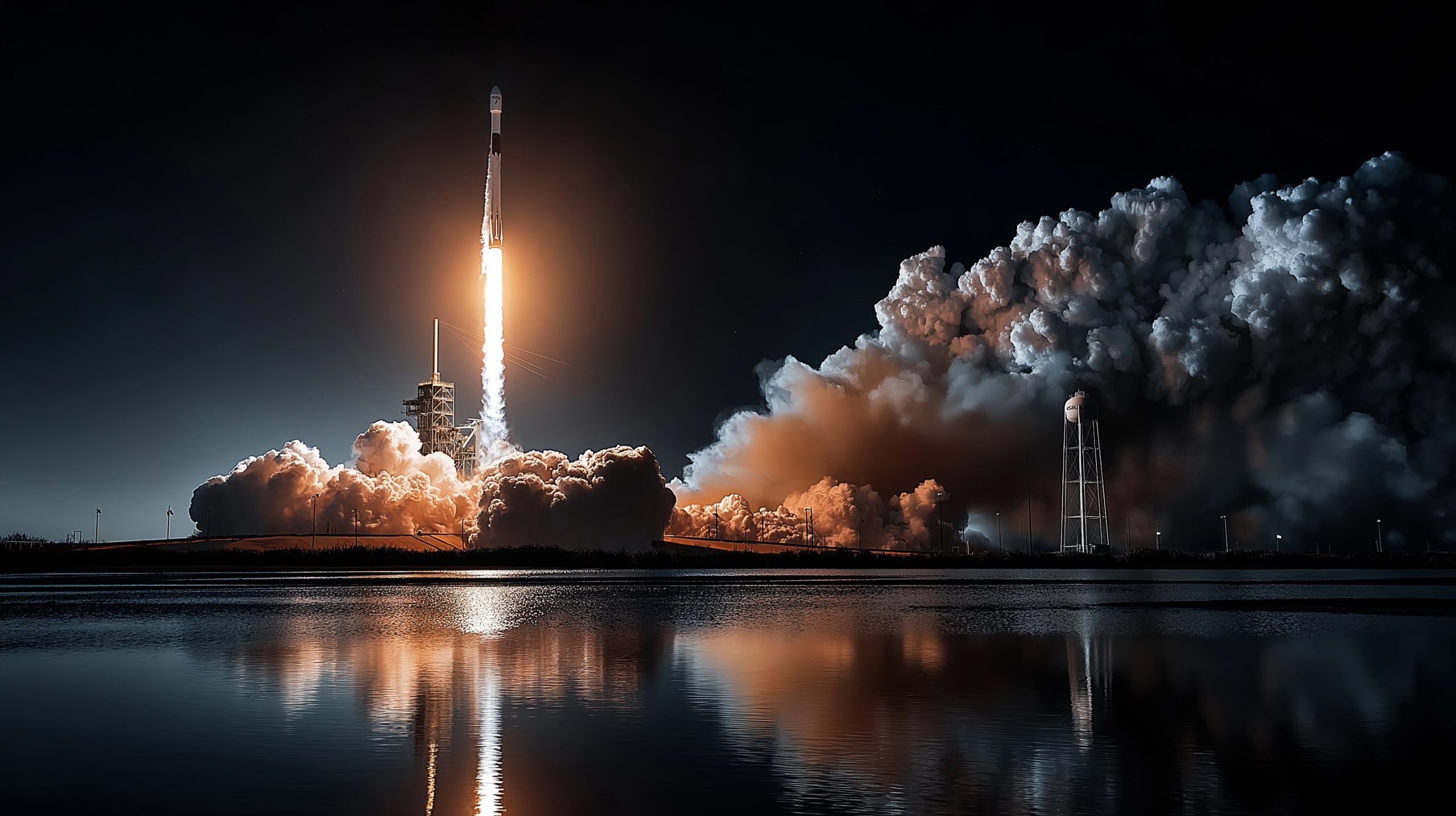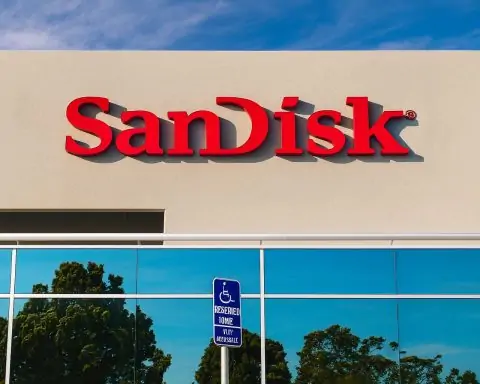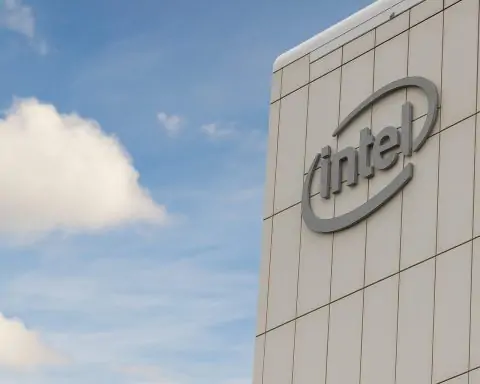- SpaceX Falcon 9 launched 24 new Starlink satellites on July 18 from California, with the booster landing for the 14th time on the Of Course I Still Love You droneship, expanding the constellation to nearly 8,000 active satellites.
- Raytheon delivered the OCX GPS control software to the U.S. Space Force, upgrading the Global Positioning System backbone to improve precision and security for military and civilian users.
- Senate appropriators voted to restore funding for dozens of NASA Earth science and space exploration missions in the 2026 budget, shielding projects deemed critical.
- The weekend marked the 50th anniversary of the Apollo-Soyuz mission (July 1975), celebrated as a milestone in U.S.–Soviet space cooperation.
- AMD unveiled its Zen 5-based Ryzen Threadripper PRO 9000 WX-Series, led by the 96-core, 192-thread 9995WX, priced at $11,699, and shipping July 23, delivering roughly 25% higher multi-core performance.
- Eli Lilly announced a $1.3 billion acquisition of Verve Therapeutics at $10.50 per share (67% premium), with lead candidate VERVE-102 in early trials targeting PCSK9-based cholesterol reduction.
- KRICT researchers developed a MoS2 sacrificial coating that enabled anode-free solid-state cells to run over 300 hours (vs about 95 hours) and raised capacity retention from 8% to 59%, with commercial use expected by 2032.
- China unveiled a fusion laser facility in Mianyang about 50% larger than the U.S. National Ignition Facility, featuring a central experiment hall and four large laser arrays for inertial confinement fusion research.
- The Tibet wind farm—the world’s highest-altitude facility at around 5,000 meters—began generating power, illustrating high-elevation wind technology with record output.
- NASA’s X-59 QueSST supersonic demonstrator completed a Mach 1.4 wind-tunnel test in Tokyo on a 19-inch model, validating a quiet sonic boom and setting the stage for the first flight later this year.
July 19–20, 2025 – This weekend saw a flurry of technological advancements and news spanning from orbit to the lab. In space, new satellites roared skyward and policymakers moved to save key missions. Computing hardware reached record extremes while analysts hyped the next computing revolution. A major biotech buyout validated gene-editing’s promise for disease, and the energy sector delivered breakthroughs in both renewable storage and futuristic fusion. Meanwhile, engineers pushed the frontiers of transportation with quiet supersonic flight tests, and a humanoid robot achieved a real-life “Iron Man” moment. Below is a comprehensive roundup of the biggest tech stories (excluding AI and mobile phones) that defined the weekend:
Space
- SpaceX Expands Starlink Constellation: Late on July 18, SpaceX’s Falcon 9 launched 24 new Starlink internet satellites into orbit from California [1]. The nighttime liftoff was followed minutes later by the booster’s 14th successful landing on the Of Course I Still Love You droneship, marking yet another reuse milestone for SpaceX’s fleet [2] [3]. This launch extends Starlink coverage (now nearly 8,000 active satellites) further into polar regions and underserved areas [4] [5].
- Next-Gen GPS System Deployed: After years of delays, the U.S. Space Force has finally received a long-awaited upgrade to its Global Positioning System infrastructure. Raytheon delivered the new OCX GPS control software, enhancing the precision and security of GPS for military and civilian users alike [6]. Officials highlighted that modernizing this backbone technology will “reinforce the reliability” of navigation services worldwide [7].
- NASA Science Missions Saved by Senate: In Washington, lawmakers moved to rescue dozens of NASA science missions that were facing cancellation under a draft 2026 budget. Senate appropriators voted to restore funding for a host of Earth science and space exploration projects [8]. The bipartisan push spares missions deemed critical for climate research and technological innovation, reaffirming Congress’s commitment to NASA’s scientific portfolio [9]. (However, some costly flagship programs remain in budget limbo, leaving uncertainty about their future [10].)
- 50th Anniversary of US–Soviet Space Handshake: This weekend also marked 50 years since the historic July 1975 Apollo-Soyuz mission – the first joint U.S.–Soviet spaceflight. The anniversary of the orbital handshake was celebrated as a milestone in international collaboration, underscoring how cooperation can “transcend political boundaries” in the pursuit of science [11]. Observers noted that the spirit of Apollo-Soyuz endures in projects like the International Space Station, even amid today’s geopolitical strains.
Computing & Hardware
- AMD Unveils 96-Core Super-Chip: Processor maker AMD launched its monstrous “Zen 5” based Ryzen Threadripper PRO 9000 WX-Series CPUs, headlined by a flagship 96-core, 192-thread model. Priced at a wallet-scorching $11,699, the top-tier 9995WX chip is now the world’s fastest workstation processor [12]. Hitting the market July 23, this 5-nanometer behemoth delivers roughly 25% higher performance than the previous generation in multi-core workloads [13] [14]. Workstation vendors like Dell and Lenovo plan to ship systems with the new Threadrippers, which excel at tasks like 3D rendering and video production [15]. (AMD also rolled out 64-core, 32-core, and 24-core variants at lower prices [16], opening up this firepower to a range of professionals.)
- Quantum Computing Hype – “Bigger Than Fire”? A bold proclamation from Bank of America turned heads: BofA’s analysts said quantum computing could be “humanity’s biggest breakthrough since the discovery of fire,” with the potential to “change everything” from drug discovery to logistics [17] [18]. Quantum computers exploit qubits that exist in multiple states, and “theoretically, there’s no calculation a quantum computer can’t do,” the bank noted, arguing this tech could eventually revolutionize encryption, materials science, and medicine [19]. Industry experts tempered the excitement, however. NVIDIA’s CEO Jensen Huang recently cautioned that practical quantum advantages are still more than a decade away [20], and leading quantum researchers suggest progress will be gradual rather than a sudden leap. “We’re going to be turning the volume steadily, and we can start to hear the music now,” quipped Quantum Circuits co-founder Rob Schoelkopf, “eventually everyone will be able to hear the music” [21] – but it will take sustained R&D to get there.
Biotechnology
- Lilly’s $1.3B Gene Editing Bet: Pharmaceutical giant Eli Lilly announced a $1.3 billion deal to acquire Verve Therapeutics, a biotech startup developing one-time gene-editing treatments for cardiovascular disease. Verve’s experimental therapy uses base editing to alter the PCSK9 gene in vivo, aiming to permanently lower LDL cholesterol with a single treatment [22] [23]. Analysts are calling the acquisition “a win for Verve and other players in the gene-editing space,” suggesting it validates the commercial potential of CRISPR-based therapies [24]. Lilly will pay $10.5 per share (a 67% premium) for Verve, whose lead candidate VERVE-102 is in early trials for patients with genetic high cholesterol [25] [26]. “We are skeptical about the true market need of additional genetic medicines in these indications,” cautioned BMO Capital Markets analyst Evan Seigerman, noting competing cholesterol-lowering approaches exist [27]. Nevertheless, Lilly’s move – following several other gene-editing partnerships in recent years – signals a major vote of confidence that gene editing could transform treatment of heart disease. If successful, a one-and-done genetic fix for high cholesterol would upend the current standard of lifelong pills, representing a “transformative” breakthrough for cardiovascular medicine, as Lilly’s team put it.
Energy & Sustainability
- 7× Battery Life Breakthrough: A team in South Korea achieved a sevenfold increase in the lifespan of cutting-edge solid-state batteries, a leap that could revolutionize energy storage. Researchers at KRICT (Korea Research Institute of Chemical Tech.) developed a cheap molybdenum disulfide (MoS₂) thin-film that, when applied as a “sacrificial” coating in anode-free solid-state cells, dramatically improved their stability [28] [29]. By preventing lithium dendrites and stabilizing the battery’s interfaces, the MoS₂ layer kept test cells running over 300 hours (versus ~95 hours without it) and boosted capacity retention from 8% to 59% [30]. KRICT’s president hailed the innovation: “This is a core next-generation technology that could accelerate the commercialization of all-solid-state batteries across various applications.” [31] The researchers expect the tech could be ready for real-world use by 2032 [32], paving the way for safer, longer-lasting batteries in electric vehicles and grid storage.
- China’s Giant Fusion Laser Revealed: Satellite imagery and analysis by experts this week shed light on a sprawling new laser fusion research facility under construction in Mianyang, China. The secretive complex – about 50% larger than the US National Ignition Facility (NIF) – features a massive central experiment hall and four huge laser arrays, indicating China’s intent to leap ahead in inertial confinement fusion research [33] [34]. Such laser-driven fusion labs can help achieve nuclear fusion reactions by blasting targets with intense lasers, and are invaluable for both clean energy research and simulations relevant to nuclear weapons design (especially since explosive testing is banned) [35] [36]. “Whoever wins the ‘quantum race’ will gain unprecedented advantage,” BofA said of computing – and a similar ethos seems to apply in the race for fusion. The discovery of China’s giant fusion laser – described as “bigger than anything we imagined” – has sparked global buzz [37]. While it underscores China’s drive toward unlimited clean energy, security analysts note it will also aid their weapons program: such facilities “increase confidence in weapon designs without testing,” explained nuclear policy expert William Alberque [38] [39]. In short, the fusion lab signals a new front in both international energy innovation and great-power competition.
- Cutting Carbon Monoxide into Fuel: In climate tech news, scientists announced a “breakthrough” method to convert carbon monoxide (CO) pollution into clean fuel at scale [40] [41]. Using a novel catalyst, a research team showed CO (a toxic gas and major industrial emission) can be efficiently transformed into useful hydrocarbons – essentially turning pollution into usable fuel. This development, if commercialized, could reduce greenhouse emissions by recycling a harmful byproduct of combustion into sustainable energy. Experts cautioned that it’s early-stage research, but hailed the concept as one that “has the potential to contribute to the energy transition” by closing the carbon loop [42].
- “Roof of the World” Wind Farm: The world’s highest-altitude wind farm has come online in Tibet, harnessing powerful winds on the Himalayan Plateau. Per Chinese state reports, the sprawling wind farm sits at around 5,000 meters (16,400 ft) elevation – so high that turbine blades spin among mountain peaks [43] [44]. Despite the thin air, the turbines are generating record power, taking advantage of steady winds “on the roof of the world.” This project showcases advances in wind technology that can operate in extreme environments. Renewable energy analysts say high-elevation installations could significantly boost power output in regions like Tibet, which has vast wind potential. The successful launch of the Tibet wind farm is being celebrated as a engineering feat, though its remote location also poses challenges for maintenance.
Transportation
- Quiet Supersonic Flight Nears Reality:NASA’s experimental X-59 QueSST project hit a key milestone in Tokyo, where a scale model of the sleek supersonic jet was tested in JAXA’s wind tunnel at Mach 1.4 (925 mph). Remarkably, the X-59’s needle-nosed design performed as hoped – scattering shockwaves so they won’t coalesce into a loud sonic boom, but rather a soft “thump” [45] [46]. The data validate years of computer modeling, setting the stage for the X-59’s first real flight later this year [47]. NASA’s goal is to prove supersonic planes can fly faster than sound “without rattling communities” below [48] [49]. If successful, this could overturn the 50-year ban on commercial supersonic travel over land. During the Tokyo tests, the 19-inch model endured wind speeds mimicking cruising flight, allowing engineers to measure the simulated “boom” (or lack thereof) under the aircraft [50] [51]. “People on the ground will hear nothing more than a quiet sonic thump – if they hear anything at all,” NASA says [52] [53]. With these promising results, the X-59 team is charging toward demo flights that could bring back supersonic air travel, this time quiet and community-friendly.
- EV Breakthrough: 621-Mile Range Hybrid: Chinese automaker Geely stunned the car world by unveiling the Zeekr 9X, a luxury plug-in hybrid vehicle that can reportedly travel 1,000 km (621 miles) on a single charge+tank – a range rivaling gasoline cars. The 9X combines a high-capacity battery with an efficient engine generator, and achieves 0–60 mph in just 3.1 seconds despite its range emphasis [54]. This announcement underscores how rapidly electric vehicle technology is evolving, shattering previous limits on range anxiety. (For comparison, most current EVs top out around 300–400 miles per charge.) While some observers note the 9X is a hybrid (carrying both battery and fuel), its specs highlight a trend of EVs and hybrids pushing performance boundaries. Industry experts say achieving 600+ miles in a mass-produced model – even with a gasoline assist – is a “proof of concept” that next-gen batteries and powertrains are closing the gap with fossil fuels. Western automakers will be under pressure to respond as Chinese EV brands like Geely and BYD continue rapid innovation in long-range, high-performance electric drivetrains.
Robotics
Roboticists hit a high-flying milestone: Researchers in Italy completed the first-ever flight of a jet-powered humanoid robot. The bipedal machine, dubbed iRonCub MK3, uses four micro turbojet engines – two strapped to its arms and two on a back-mounted pack – to achieve vertical lift. In a recent test in Genoa, iRonCub ignited its thrusters and hovered about 50 cm (20 inches) off the ground, while remaining stable and controlled [55] [56]. This makes it the world’s first humanoid robot to fly untethered. Developed by the Italian Institute of Technology (IIT), the bot is a modified version of their child-sized iCub robot outfitted with a new titanium spine, heat shields, and an advanced control system to manage the complex aerodynamics [57] [58]. “This research is radically different from traditional humanoid robotics and forced us to leap forward,” said lead engineer Daniele Pucci [59]. The team even integrated AI-trained models to help the robot balance in mid-air amid turbulent exhaust flows [60] [61]. The iRonCub project aims to create robots that can fly into hazardous or hard-to-reach areas – for example, disaster zones or collapsed buildings – where wheeled or walking robots can’t go. A flying humanoid could one day scout disaster sites, carry out repairs on bridges or tall structures, and assist in rescue missions by combining aerial agility with human-like manipulation capabilities [62] [63]. While iRonCub’s current flights are brief and tethered for safety, the breakthrough demonstrates a thrilling convergence of robotics and aeronautics. The engineers are now refining the flight control algorithms to handle wind and other real-world variables [64]. It may be a while before jet-powered robo-rescuers are zipping through the skies, but iRonCub’s first hover proves that Tony Stark’s Iron Man suit has at least one real-life cousin in the lab – a baby-faced robot that can take to the air.
Sources: Major news outlets and press releases from July 19–20, 2025, including SpaceBrief [65] [66], SpaceNews, NASA [67] [68], The Verge [69], AInvest/Fortune [70] [71], Reuters [72] [73], ScienceDaily/TechXplore [74] [75], Energy-Reporters [76] [77], Live Science [78] [79], and IIT/SciTechDaily [80] [81].
References
1. keeptrack.space, 2. keeptrack.space, 3. www.space.com, 4. keeptrack.space, 5. www.space.com, 6. keeptrack.space, 7. keeptrack.space, 8. keeptrack.space, 9. keeptrack.space, 10. keeptrack.space, 11. keeptrack.space, 12. www.theverge.com, 13. www.amd.com, 14. www.amd.com, 15. www.theverge.com, 16. www.theverge.com, 17. www.ainvest.com, 18. www.ainvest.com, 19. www.ainvest.com, 20. www.ainvest.com, 21. www.ainvest.com, 22. www.reuters.com, 23. www.reuters.com, 24. www.reuters.com, 25. www.reuters.com, 26. www.statnews.com, 27. www.reuters.com, 28. techxplore.com, 29. techxplore.com, 30. techxplore.com, 31. techxplore.com, 32. www.rudebaguette.com, 33. www.reuters.com, 34. www.reuters.com, 35. www.reuters.com, 36. www.reuters.com, 37. www.energy-reporters.com, 38. www.reuters.com, 39. www.reuters.com, 40. www.energy-reporters.com, 41. www.energy-reporters.com, 42. www.yahoo.com, 43. www.energy-reporters.com, 44. www.energy-reporters.com, 45. scitechdaily.com, 46. scitechdaily.com, 47. scitechdaily.com, 48. scitechdaily.com, 49. scitechdaily.com, 50. scitechdaily.com, 51. scitechdaily.com, 52. scitechdaily.com, 53. scitechdaily.com, 54. www.energy-reporters.com, 55. scitechdaily.com, 56. scitechdaily.com, 57. scitechdaily.com, 58. scitechdaily.com, 59. scitechdaily.com, 60. scitechdaily.com, 61. scitechdaily.com, 62. www.livescience.com, 63. www.livescience.com, 64. www.livescience.com, 65. keeptrack.space, 66. keeptrack.space, 67. www.nasa.gov, 68. scitechdaily.com, 69. www.theverge.com, 70. www.ainvest.com, 71. www.ainvest.com, 72. www.reuters.com, 73. www.reuters.com, 74. techxplore.com, 75. techxplore.com, 76. www.energy-reporters.com, 77. www.energy-reporters.com, 78. www.livescience.com, 79. www.livescience.com, 80. scitechdaily.com, 81. scitechdaily.com










